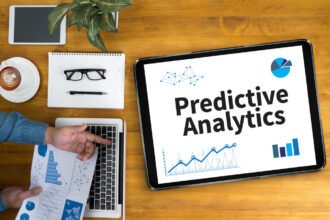
A CEO that I worked for once gave me the following feedback when I proudly sent him an Excel file containing the data that he had asked me for less than an hour prior:
Never give me data. Only provide me with information.
A CEO that I worked for once gave me the following feedback when I proudly sent him an Excel file containing the data that he had asked me for less than an hour prior:

A CEO that I worked for once gave me the following feedback when I proudly sent him an Excel file containing the data that he had asked me for less than an hour prior:
Never give me data. Only provide me with information.
A CEO that I worked for once gave me the following feedback when I proudly sent him an Excel file containing the data that he had asked me for less than an hour prior:
Never give me data. Only provide me with information.
This was one of the most valuable lessons that I have ever learned, and I have since taken it to heart each and every time I am tasked with turning raw enterprise data into digestible information. That afternoon, I was sent back to the drawing board to create summaries and metrics from the raw data, which helped us to better understand transit times and claims rates for a client we had been providing with logistics services.
However, prior to my arrival at the company, it was clear that all of these types of requests went through the IT group, who in turn provided a very similar data dump to what I had provided the first time around. This was when I truly came to realize the difference between what IT and analytics bring to the table.
Analytics, big data, and data science are relatively new terms. Rarely do you walk into an organization and find an analytics or data science team, or even one person solely responsible for turning data into actionable information to improve the business. In fact, most have not even developed robust reporting solutions that enable the business to progress with relatively low human interaction. Rather, they have bolted reporting and analytics responsibilities onto the already busy schedules of their IT professionals. This is a mistake.
Information technology is not analytics, and analytics is not information technology.
Almost every client I have walked into gets its information as follows:
- Stakeholders think they have stumbled upon a eureka moment that is going to progress the business
- Said stakeholders contact the IT group to request a “report” with the information that is needed to back up the eureka moment. Rather than a request for valuable insights to get to the final outcome, this tends to be a very specific request with little room for creativity, such as “Give me the number of accessorial charges that we paid to each carrier by week over the past three months.”
- Three weeks pass.
- IT provides the “report”, which typically is a data dump into Excel that comes out of a SQL query the IT professional wrote in between his actual IT tasks.
- Several iterations occur until the stakeholders gets exactly what they asked for (e.g. a variation of the original data dump, but with additional columns).
This is counterproductive for a variety of reasons. One, the productivity in IT has suffered and, rather than focusing on database maintenance and other IT tasks, the group has been struggling to keep up with ad hoc requests from the rest of the business. Two, the stakeholder has likely chased down a self-fulfilled prophecy in that, by asking for a very specific data dump, he has gotten exactly what he needed to prove his original point. Three, the question that gets answered it likely not the question that is going to improve the business.
Analytics professionals are the liaison between the data that is stored on the company’s servers and the insights that are needed to propel the business forward.
Every business that is looking to grow should have one of these analytics professionals in the trenches. If you are unable to develop an internal analytics team at this time, then bring in a consultant or team of consultants to provide this service. The ROI on the insights that you will gain will far outweigh the upfront costs, and the time to completion will be a fraction of the “just have IT do it” route.
At a minimum, your analytics team should have technical skills, such as the ability to create a data warehouse out of various sources of data, experience on writing SQL code and stored procedures, and skills in other analytical tools, such as Excel, R, and visualization tools. Additionally, the analytics team should have experience on the business side. They should understand finance, sales, and operations, and should be comfortable dealing with the executives in every branch of the organization.
Often, it may make sense to start small by taking on just one project, such as finding ways to reduce your logistics costs or looking at which of your products are contributing to the majority of your margin (and which are just over complicating your business). Then, once you have gained confidence in the payoff of analytics, you can develop internal analytics resources and expand the function to a more holistic view of the organization.
If your goal is to obtain data dumps containing exactly what you asked for, then, by all means, bury your IT group in report requests. If you would rather gain valuable insights to propel your business forward, regardless of whether they have been discovered or not, then build up your analytics function.








